The first time I saw a Latina on wheels was in the late ’90s movie Brink! Gabriella, the outspoken character played by actress Christina Vidal, stood out as the sole woman and Latina character in the ‘Pup n Sudz’ crew of hearty rollerbladers. Like many, I got swept up into the oversized shirt, flannel, baggy jeans rollerblading craze that had populated the late 90s and early 2000s aesthetic, but the usual image of the rollerblader, skater, or skateboarder was mostly white affluent boys and men. Women, girls, and Latina representation were few and far between, making Vidal’s role even more poignant as a character several Latinas, like me, could identify with.
From the mid-2000s to 2010, more diversity began showing up on the big screen with films like Roll Bounce set in Chicago to spotlight the history and cultural significance of roller rinks in Black communities, Lords of Dogtown featuring Dominican actor Victor Rasuk as skateboard pioneer Tony Alva, and women’s roller derby film Whip It. However, Gabriella remained an outlier as none of them accounted for any Latina characters in the roller/skate scene. It wasn’t until the 2018 documentary-style film Skate Kitchen, later adapted into the 2020 HBO show Betty, that we finally saw a fair representation of Latina characters on wheels in popular culture with a cast that included Latina actors and IRL skateboarders, Ajani Russell, Rachelle Vinberg, and fraternal twins Brenn and Jules Lorenzo.
Today, there are thriving communities of Latinas on wheels – both nationally and abroad – who are paving the way, not only through their practice but by catering to and empowering other women, trans, and nonbinary identities to feel validated and welcomed into skating. Two influential figures in this movement are roller skater Isabella Bobadilla, the co-founder of Perreo En Patines, and skateboarder and co-founder of Bronx Girls Skate, Kava García Vasquez. They have each established vibrant platforms to ignite cultural movements in Miami and New York for women and queer folks to learn how to roller skate and skateboard, while fostering a safe and creative community of belonging.
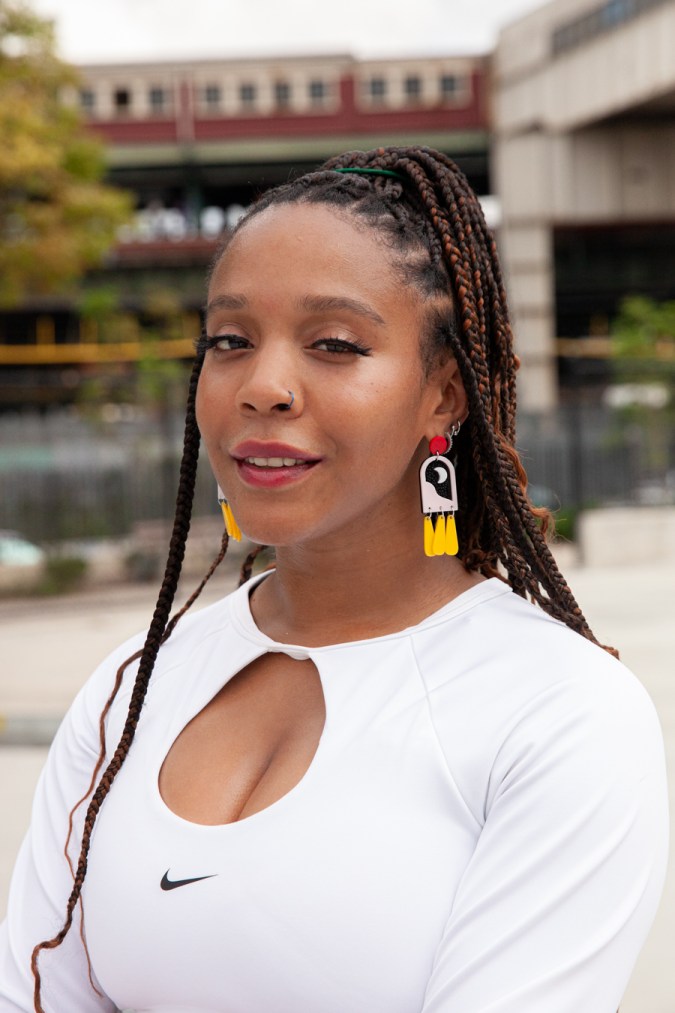
“Skateboarding was something I grew up seeing since I lived down the street from River Avenue Skatepark, but I rarely saw folks who looked like me. You know, Afro-Latina women growing up in the Bronx. It was rare to see one of us on a skateboard. I grew up thinking of it as a ‘cool guy’ space…with skateboard culture, fashion, art, and music. I thought, ‘That looks cool, I wish that could be me, but it doesn’t look like it’s made for me,’” Vasquez recalls.
The lack of representation and inclusion around her propelled Vasquez to conceptualize Bronx Girls Skate in college, while receiving fellowships geared towards underserved youth and skateboarding in Mozambique. She then traveled to over 10 countries to observe how women are personally, politically, and economically empowered through skateboarding.
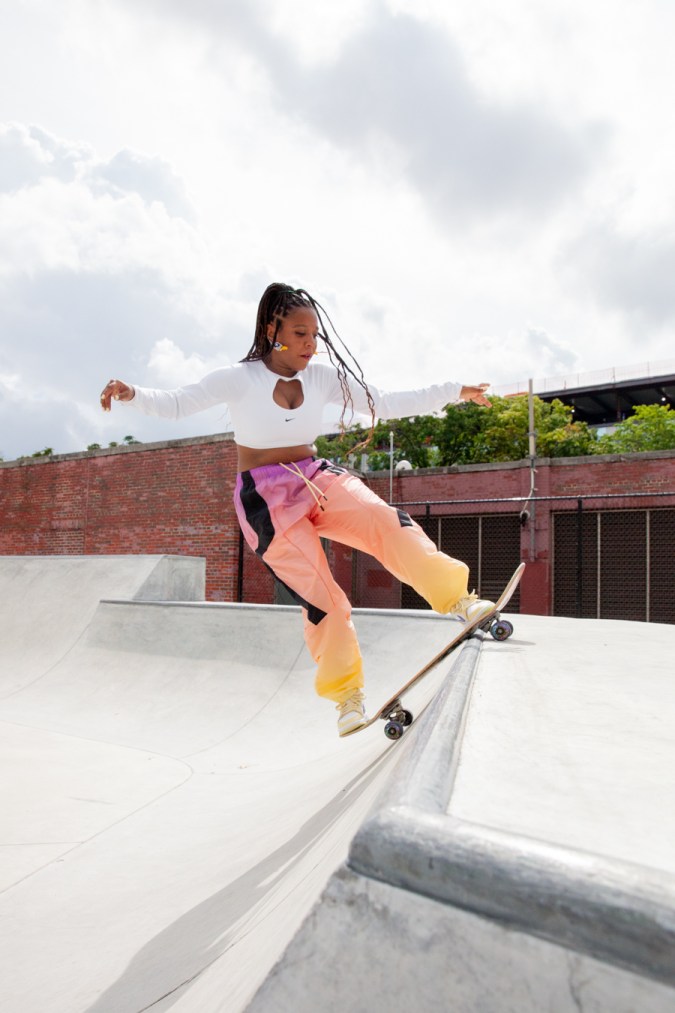
She circled back to this theme while connecting with her heritage in communities like La Republica Dominicana and Puerto Rico where she has maintained a cross-cultural connection with trailblazing femme-centered skate groups like Ciguapa Skate. Vasquez co-produced a three-day festival designed to highlight the Dominican Republic’s skateboarding community, with the second day focusing exclusively on emerging women and queer skate experiences in both La Republica Dominicana and Puerto Rico. “To utilize skateboarding as a tool that also reconnects me with the homeland was just a beautiful and collaborative learning opportunity that has brought me so much closer to my culture, and closer to the history in the making that is alive and here with us,” rejoices Vasquez.
Through her work and travels Vasquez formulated the idea of bringing that sense of empowerment to the Bronx. Upon her return, she met her co-founding partner Mel Ramirez, “I remember seeing Mel skating and she was shy, but wore bright colors… and I was like, wow, she’s got a cool style! Her expressing femininity in a space that was so male-dominated, especially in the Bronx, where our communities are predominantly Black and brown–I thought it was revolutionary, in an organic way. Together, we formed this local and global nexus where Bronx Girls Skate exists as a model for women, for skateboarding, and for the Bronx,” says Vasquez.
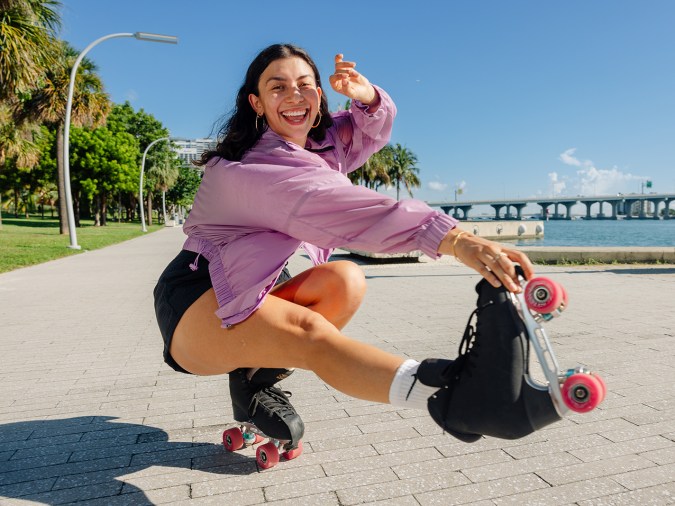
A similar sense of camaraderie is what got Bobabdilla started with her organization when Bobadilla moved back home to Miami. She found herself starting anew and in search of connecting with people in her community. She checked out the Miami skate rinks but most of them only played disco. So, she recruited her friend and co-founder Maria Saldana to help produce a test party called “Reggaeton Rink Night,” which turned out to be a huge success and thus became a recurring theme that sparked the movement of Perreo En Patines.
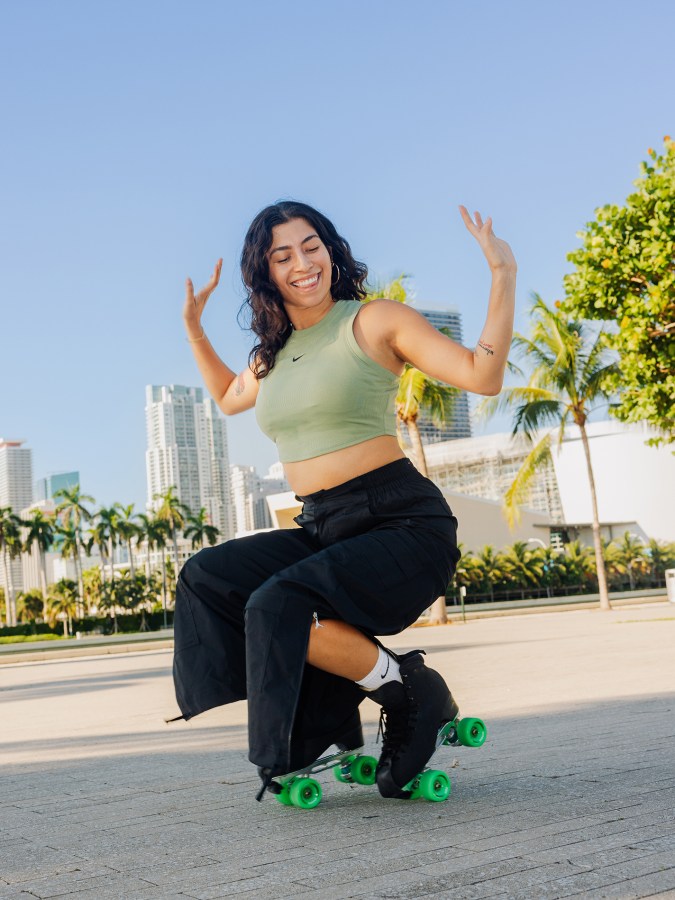
“It’s very hard to find queer skaters and/or Latina skaters in the wild. You have to have established spaces for them. I also started roller skating in a very non-traditional way, not at the rink. The spaces we skate in are mostly basketball courts and tennis courts, it’s not always an established space,” Bobadilla shared. “After I saw a couple of fights break out in our skate locations I wanted to create events that emphasize a safe place, where we explicitly said, ‘This is specifically for women and the queer community,’ and others that come, please be mindful of the space and respectful of who it’s intended for in the first place. I’m loudly queer, and it didn’t feel right – not saying that this space was meant for us to feel good and to feel free to be us.”
Furthermore, Bobadilla describes Perreo En Patines as a form of skating to a fusion of various genres that range from reggaeton, salsa, bachata, cumbia, dembo, Afrobeat, and disco. These unique combinations allow people to focus less on typical skate moves and to naturally groove to the music, adapting their skate style to the rhythms. The music played at these events is deeply personal and nostalgic to Bobadilla’s cultural upbringing and experiences dancing with family. “All of the music I play at my events is music that I listened to growing up. The moves I’m doing at the skate Perreos are the same moves that I was doing in middle school when I would go to a house party or my tia’s house and dance salsa, bachata, and merengue with my cousins. It’s just what I grew up around and I know that is true for others as well, so it’s great when everyone brings their unique style of skating to it,” Bobadilla elaborates.
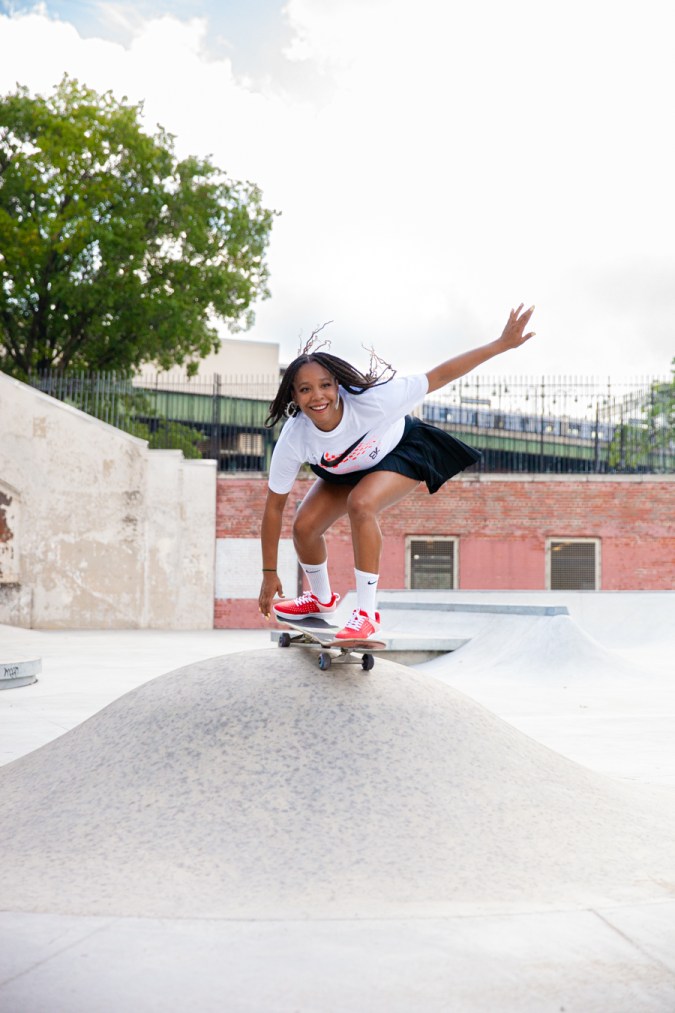
Vasquez also reflects on her cultural expression through fashion while skateboarding. “I love that skateboarding is about comfort, and utility as well as style. When I skate I usually have lipstick on, it makes me look like my beautiful mom and I also feel like it enhances my Latinidad, by tapping into certain features. As a Black Latina, especially, I think that a lot of the popular understanding of Latinas is concentrated on the bodily form, and on certain performances of identity that can be hyper-feminine. Skateboarding enables me to focus more on the fluidity of my style and expression which has a balance of form and function. One of the things Bronx Girls Skate wants to explore in 2024 is skating products that are more inclusive of different body types and that support our movement and adaptability in the clothing that we wear–to the most feminine among us, the tomboys and everything in between and outside of that.”
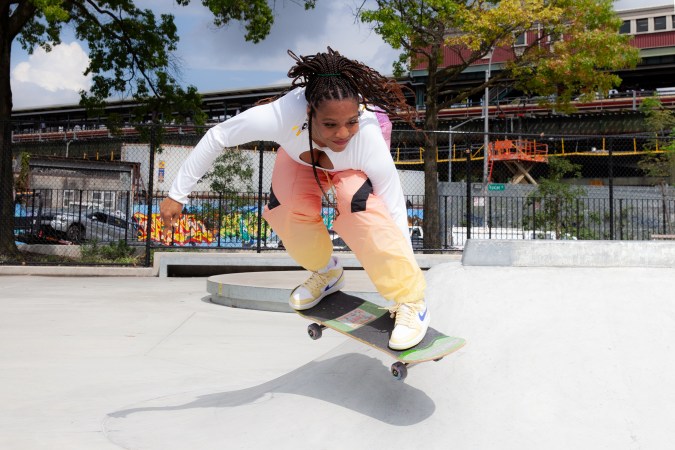
Bronx Girls Skate, along with various other initiatives that are driving Latinas on wheels, extend their support beyond the realms of skateboarding, roller skating, and rollerblading. These movements are committed to fostering their communities and actively seeking innovative avenues to express themselves within sports that were not originally tailored to their needs. Nevertheless, they continue to enrich these communities through their inclusivity of gender and culture, thereby enhancing the entire sporting on wheels landscape.
“There are so many components of how our experience helps us to tap into not only skateboarding, but we’re also here to help these women and girls grow as people. We know that Latinas and Black women in the Bronx face things like poverty and lack of access to healthcare, so we’re always trying to drive a conversation that explores a model of team building to help empower the person to continue skateboarding and to inspire them and their futures while tackling the social and economic barriers that people of our demographic face,” Vasquez states.
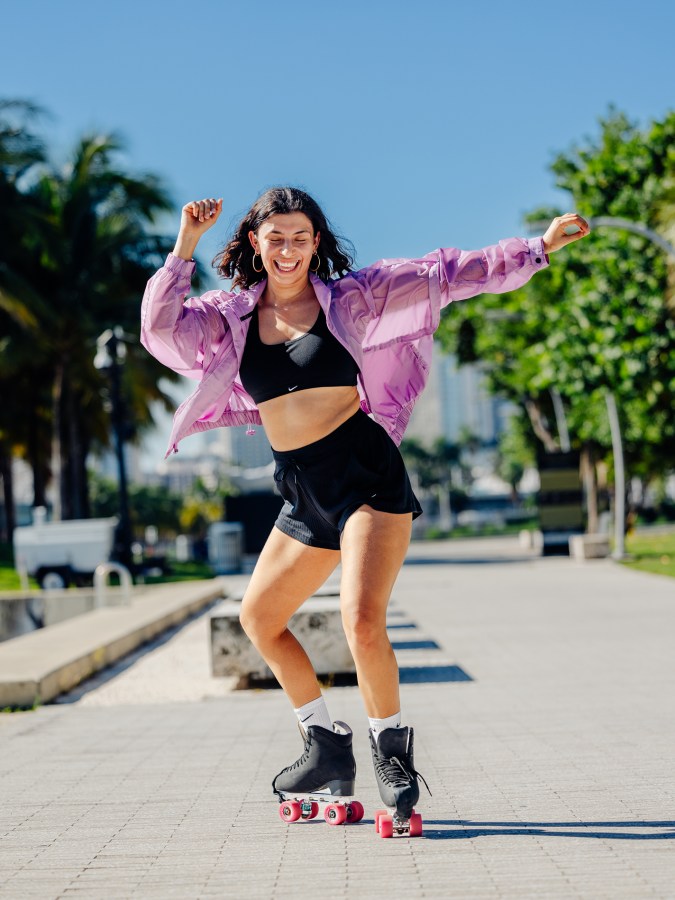
Bobadilla reflects on how she has tapped into a supportive network of Latinas/Latines on social media who are making their mark in skating through movements for inclusion in other states and countries. “It feels like we are all so similar in driving a shared purpose. The Latine community is everywhere but it’s wonderful that it feels so tight-knit online, which is one of the great things about social media because once you step out the door it doesn’t always feel that way,” Bobadilla remarks.
Bobadilla hopes for greater gender inclusivity and cultural diversity in roller-rink environments that are still 98% male-dominated by gaining support from the “O.G. skaters” in the scene to make those environments less intimidating and more welcoming. She also wishes for continued support from brands to help enhance the access and outreach for hosting events like Perreo En Patines. Vasquez is keen on exploring more of the artistic and fashion expressions that encourage diversity, inclusivity, and democracy in skateboarding’s future. She desires to strengthen her Bronx community with self-sufficiency, brand, and community collaborations to sustain a lasting legacy for the future generations of Latinas on wheels.





